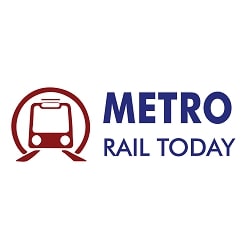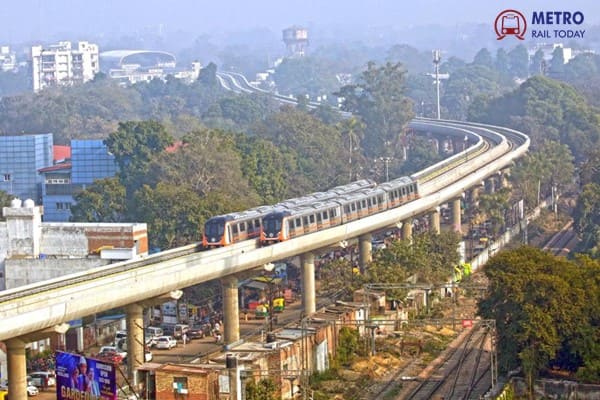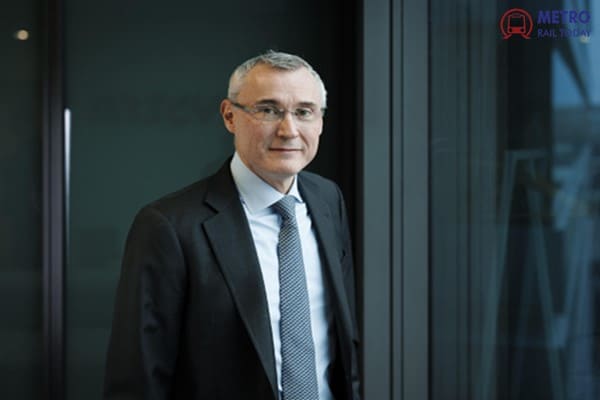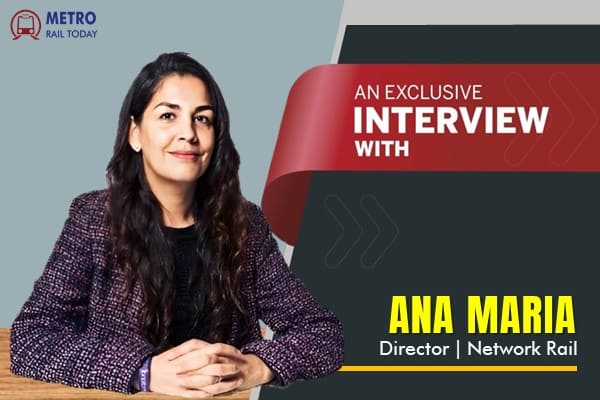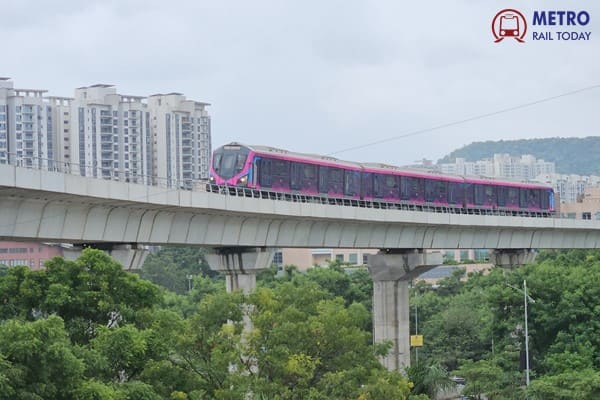 Pune Metro Line 3 makes history with All-Women Train Operators under Keolis Contract
Pune Metro Line 3 makes history with All-Women Train Operators under Keolis Contract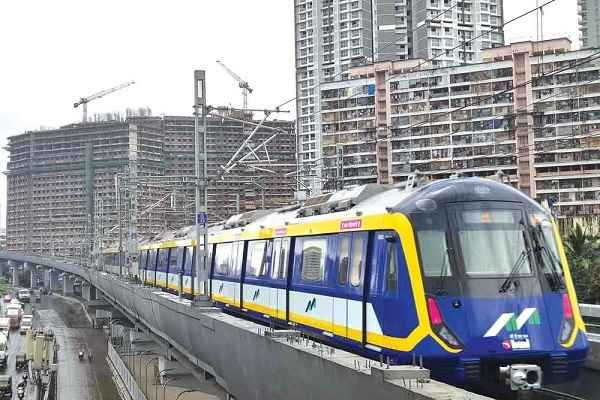 MMRDA commences trial test run on Mumbai Metro Line 4
MMRDA commences trial test run on Mumbai Metro Line 4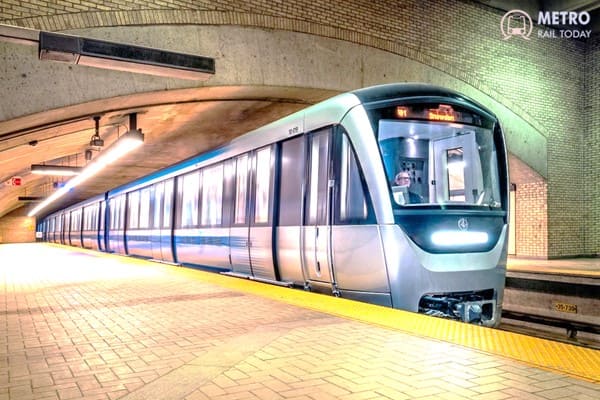 CAF bags €450 Million Contract to modernise and maintain Cairo Metro Lines 1 & 2
CAF bags €450 Million Contract to modernise and maintain Cairo Metro Lines 1 & 2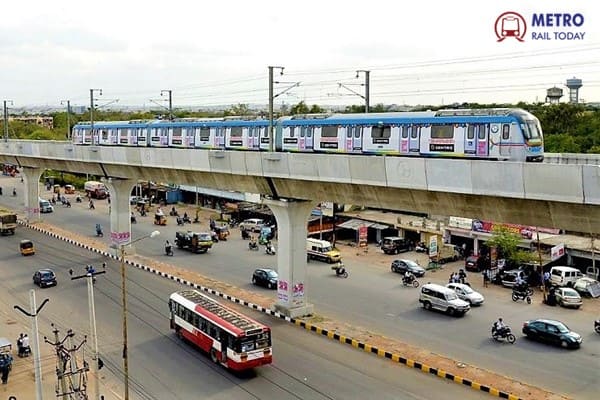 Hyderabad Metro Phase 2 Expansion Hits Roadblock as L&T Objects to Network Integration
Hyderabad Metro Phase 2 Expansion Hits Roadblock as L&T Objects to Network Integration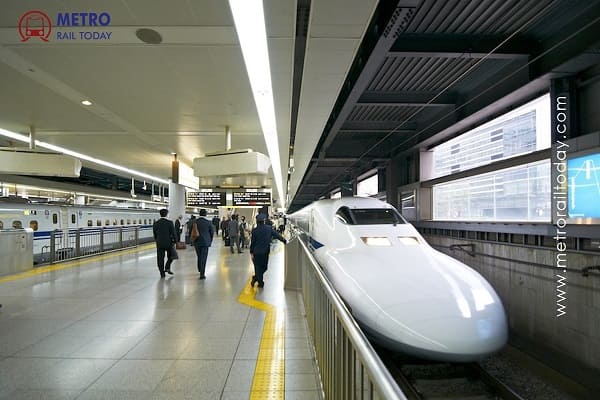 First Undersea Tunnel Breakthrough achieved on Mumbai-Ahmedabad Bullet Train Project
First Undersea Tunnel Breakthrough achieved on Mumbai-Ahmedabad Bullet Train Project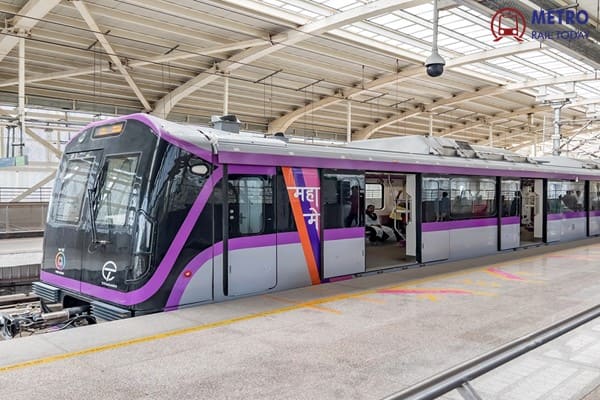 ITD Cementation wins ₹1,644 Cr Civil Contract for Swargate - Katraj UG section of Pune Metro
ITD Cementation wins ₹1,644 Cr Civil Contract for Swargate - Katraj UG section of Pune Metro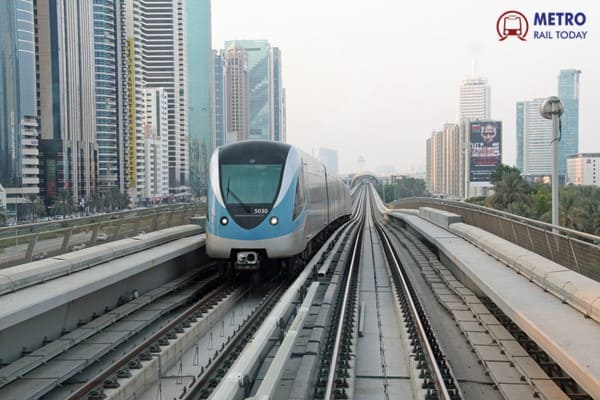 Beyond the Rails: What Indian Metros Can Learn from the World's Best
Beyond the Rails: What Indian Metros Can Learn from the World's Best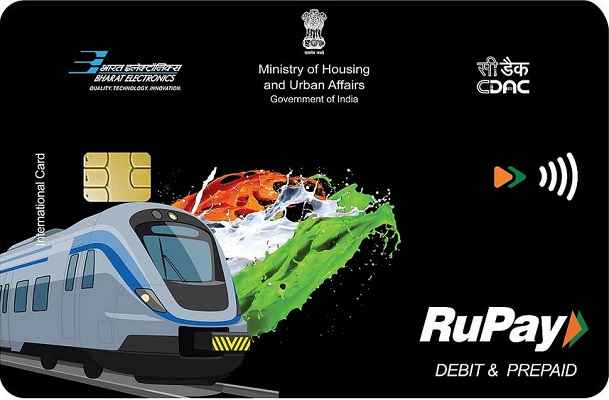 One Nation, One Card: Delhi to launch colour-coded Smart Mobility Cards for Metro, RRTS and Bus
One Nation, One Card: Delhi to launch colour-coded Smart Mobility Cards for Metro, RRTS and Bus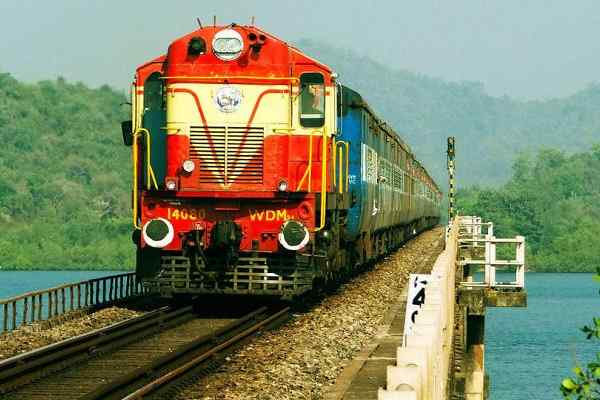 Lotus Wireless Technologies bags Kavach 4.0 Safety System Order for Indian Railways
Lotus Wireless Technologies bags Kavach 4.0 Safety System Order for Indian Railways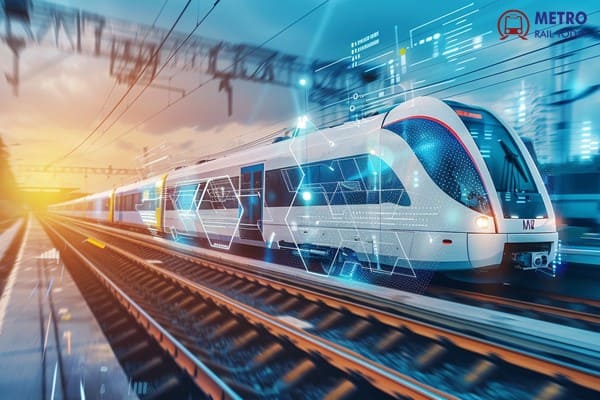 Concord Control Systems bags First Order for KAVACH 4.0 from Indian Railways
Concord Control Systems bags First Order for KAVACH 4.0 from Indian Railways
Exclusive Interview with Rahul Ranjan Mahiwal, IAS & Metropolitan Commissioner, PMRDA
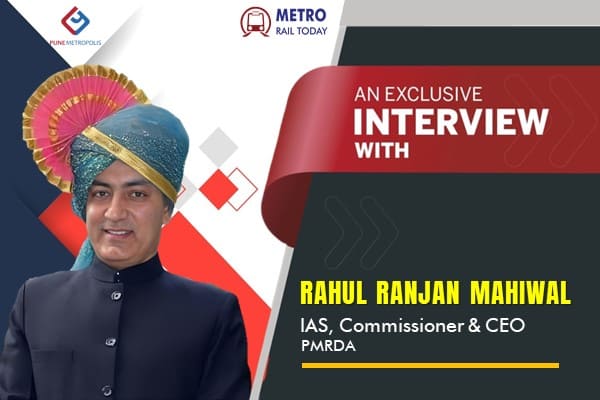
Mr. Rahul Ranjan Mahiwal, an Indian Administrative Services Officer from the 2005 batch, has been working in the capacity of Metropolitan Commissioner & Chief Executive Officer at Pune Metropolitan Region Development Authority (PMRDA) since August 2022. In this capacity, he oversees the Planning & Development Authority for the vast 6900 sq. km Pune Metropolitan Region, the third-largest in India. Tasked with managing various aspects of urban planning and infrastructure development, Mr. Mahiwal plays a crucial role in the formulation of Development Plans, granting Development Permission, and spearheading infrastructure initiatives such as the 23 km long Pune Metro Line 3 and the 82 km long 65 m wide Pune Ring Road Project.
In a remarkably short tenure, Mr. Mahiwal has demonstrated exemplary leadership by driving the progress of the Pune Metro Line 3 project. Under his guidance, the project has surged from 12% completion at the time of his appointment to an impressive 45% within just 13 months. His adept decision-making skills have been instrumental in swiftly resolving longstanding issues, including land acquisition and securing Viability Gap Funds from the Central Government.
Beyond the quantitative achievements, Mr. Mahiwal's multidimensional thinking has fostered cooperation among stakeholders, garnered support from the community, and increased overall project acceptance. His competence, agility in decision-making, profound subject knowledge, adept project management skills, and unwavering commitment to doing the right thing against all odds collectively underscore Mr. Mahiwal's success in steering the Pune Metro Line 3 project to fruition.
Congratulations on the recent recognition of Pune Metro Line 3 as the 'Most Innovative PPP Metro Project of the Year' award at the 3rd Urban Infra Business Summit & Awards 2023. Can you share some key aspects that contributed to this achievement?
The Award was granted considering the innovative way of project structuring by bundling a variety of financing instruments for an Urban Transport Sector Project while hedging the risk of the Authority but at the same time promoting the participation of the private sector. Further, the Authority has been successfully able to strategize project execution. It is India’s only Metro Project wherein more than 97% was acquired before commencement of Metro Works thereby reducing the possibility of project delays due to land acquisition issues. The Project is designed to optimize land acquisition. The Project is being developed on Sustainable Engineering principles and Green Energy concepts. The state-of-the-art CBTC system is being used for Signaling and 3rd rail technology is being used for Power Traction.
As the Metropolitan Commissioner of PMRDA, what role did strategic planning and innovative approaches play in the successful implementation of Pune Metro Line 3?
Planning & Project structuring is the most critical aspect of any project development. For a linear urban infrastructure project, alignment plays a crucial role in its success. Further, it is pertinent to identify the diverse avenues of risk & liabilities so that mitigation measures can be thought of and considered a part of the project execution. It also helps in reducing inconvenience to the citizens during the construction phase.
In this Project, the alignment has been planned to cater to the rear end of the Hinjawadi IT Park, thus reaching the last of the companies as well as promoting growth in a well-defined trajectory. The alignment passes through upcoming economic centers, 7-8 educational institutes, and highly dense residential areas. The risks have been enumerated and strategically allotted between the Concessionaire & the Authority, thereby reducing the avenues of dispute in the future. Effective traffic diversion, phased utility shifting, use of green technologies in construction, etc. are some of the other areas where PMRDA has emphasized to ensure timely delivery.
Could you elaborate on the Public-Private Partnership (PPP) model used for Pune Metro Line 3? How did it enhance project efficiency and sustainability?
The PML3 Public Private Partnership model has been developed as per the New Metro Rail Policy, 2017 under the Design Build Finance Operate Transfer model. The Project has been awarded to the Joint Venture of TRIL Urban Transport Pvt. Ltd. and Siemens Project Ventures GmbH (Germany). The total cost of the Project is Rs. 8313 cr wherein Rs. 1315 cr has been infused by the Private Entity (Concessionaire) as Equity. The Central and State Governments have pitched in the same amount as Viability Gap Funding. PMRDA has undertaken the cost of land acquisition, utility shifting etc. The remaining amount to the tune of Rs. 4678 cr has been brought in as Debt. The Concession Period is of 35 years and 4 months which includes a construction period of 3 years and 4 months. The Authority is mainly responsible for land acquisition shifting of utilities and construction of the double-decker flyover. The Concessionaire is responsible for the construction, operation and maintenance of the Rail System. The ridership risk rests with the Concessionaire.
How does Pune Metro Line 3 contribute to the overall development and connectivity of Pune Metropolitan Region? What impact is expected on urban infrastructure and mobility?
Metro is an efficient and fast mode of transport and it would effectively address traffic snarls faced by city dwellers, and working professionals, thus supporting and enabling rapid urbanization. This air-conditioned, comfortable, safe and speedy mode of transport would serve around 3.33 lakh (estimated by LIE for the year 2024) commuters daily. In the medium to long run, this will result in a significant reduction in travel time, fuel costs and travel expenses along with a lowering of noise and air pollution. Eventually, it will help to restore the glory of the Hinjawadi IT Park and attract more investments in the region paving the way for further growth and prosperity of the region.
In your role as the Metropolitan Commissioner, how do you ensure community engagement and stakeholder collaboration in large-scale infrastructure projects like Pune Metro Line 3?
As I said before, community engagement and interaction with various stakeholders including the citizens, various government as well as private sector instrumentalities is the utmost important task while executing large-scale infrastructure projects. Regular meetings, forums for discussion, follow-ups, making people/officials feel associated with the project, giving importance to the concerns of the other party and focusing on a win-win solution go a long way in fast-tracking project execution and building the necessary goodwill.
The alignment of the project falls within the jurisdictions of four urban bodies (Pune Municipal Corporation, Pimpri Chinchwad Municipal Corporation, Maharashtra Industrial Development Corporation & the Pune Metropolitan Region Development Authority) and three traffic jurisdictions namely Pune Police Department, the Pimpri Chinchwad Police Department and the Pune Rural Police Department. Additionally, utility-owning agencies like MSEDCL, MSETCL, MNGL, BSNL etc. are involved in their respective. Land from 6-7 agencies of the Central Government and 4-5 of the State Government was required for the Project. Therefore, timely addressing issues of the citizens, incorporating vital suggestions, providing necessary support to the local bodies and creating avenues of discussion both at site level and top level has helped PMRDA in achieving the said project progress.
Can you share insights into the plans and expansions for the Pune Metro network, considering the evolving needs of the region and the growing urban population?
The Metro Network tends to be more successful when the metro lines are interconnected and provide seamless connectivity to the natural ends of the city. In Pune, the Maharashtra Metro Rail Corporation has undertaken the development of 33 km long Metro Line 1 & 2 whereas PMRDA has undertaken the 23 km long 3rd line. Maharashtra Metro Rail Corporation has planned to extend Line 1 by approx. 10 km in both directions. PMRDA has planned the fourth line called the Shivajingar to Loni-Kalbhor line and Maha-Metro has planned the fifth line called the Khadakwasla to Kharadi Line. PMRDA has appointed a Transaction Advisor to assess the feasibility of developing these lines on Public Private Partnership. Subsequently, both lines will undergo implementation.
With the success of Pune Metro Line 3, what lessons or best practices can be shared with other cities planning similar metro projects, especially in terms of innovative financing and project execution?
Making an urban transport project a profitable entity is a huge challenge in itself. The decision regarding the choice of alignment and provisions of last mile connectivity are extremely important for the success of the Project as it determines ridership which is one of the crucial factors responsible for the success of any project. The Metro Line can be aided by financing tools like Viability Gap Funding, Commercial Property Development, Non-Farebox revenues like advertising, shops, booths, station naming rights etc., value capture financing instruments, transit-oriented development, hedging various risks, insurances etc. Planning of traffic diversion, alternative roads, avenues of stakeholder discussions, supply chain, quality control etc. can greatly expedite project execution.
Anything else, you would like to share with our readers?
The economic development & prosperity that the country shall witness in the next two decades need to be aligned with the proportionate development of city infrastructure. Comprehensive and consolidated planning is a key to the success of developing livable cities. Tapping into various financing instruments, focusing on self-sufficiency, optimized use of resources and protecting and creating green spaces is the way forward for healthy living. “Development Precedes Growth” should be our motto and I’m happy to share that PMRDA is relentlessly working towards making Pune, India’s Most Livable Destination.




